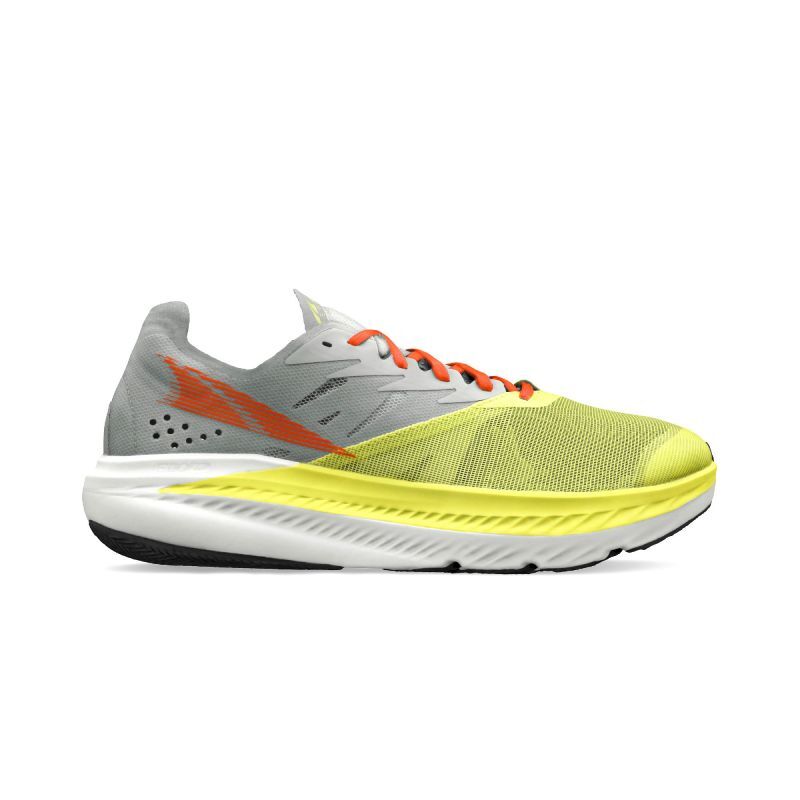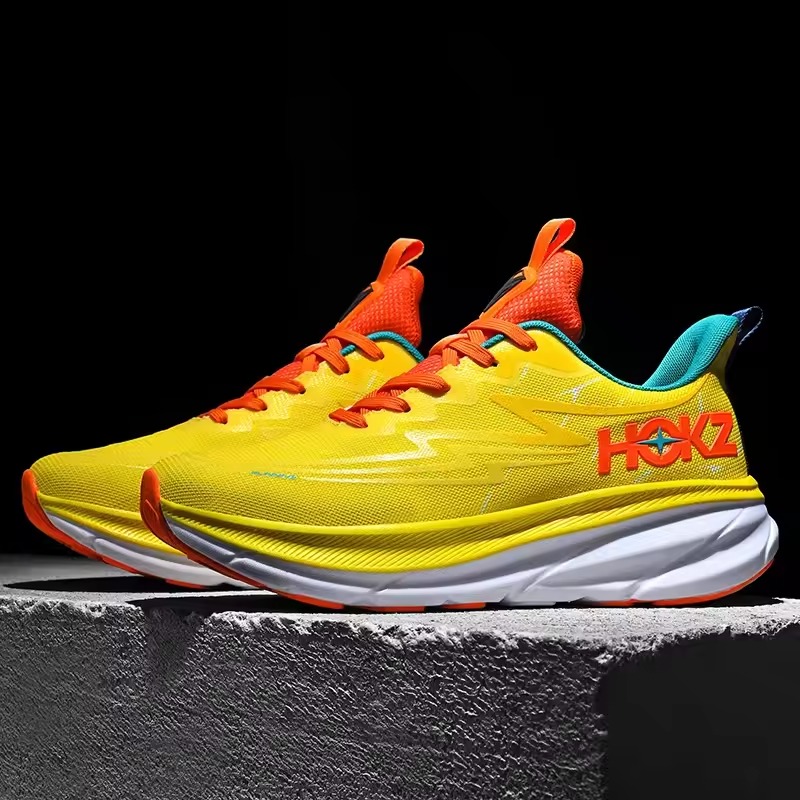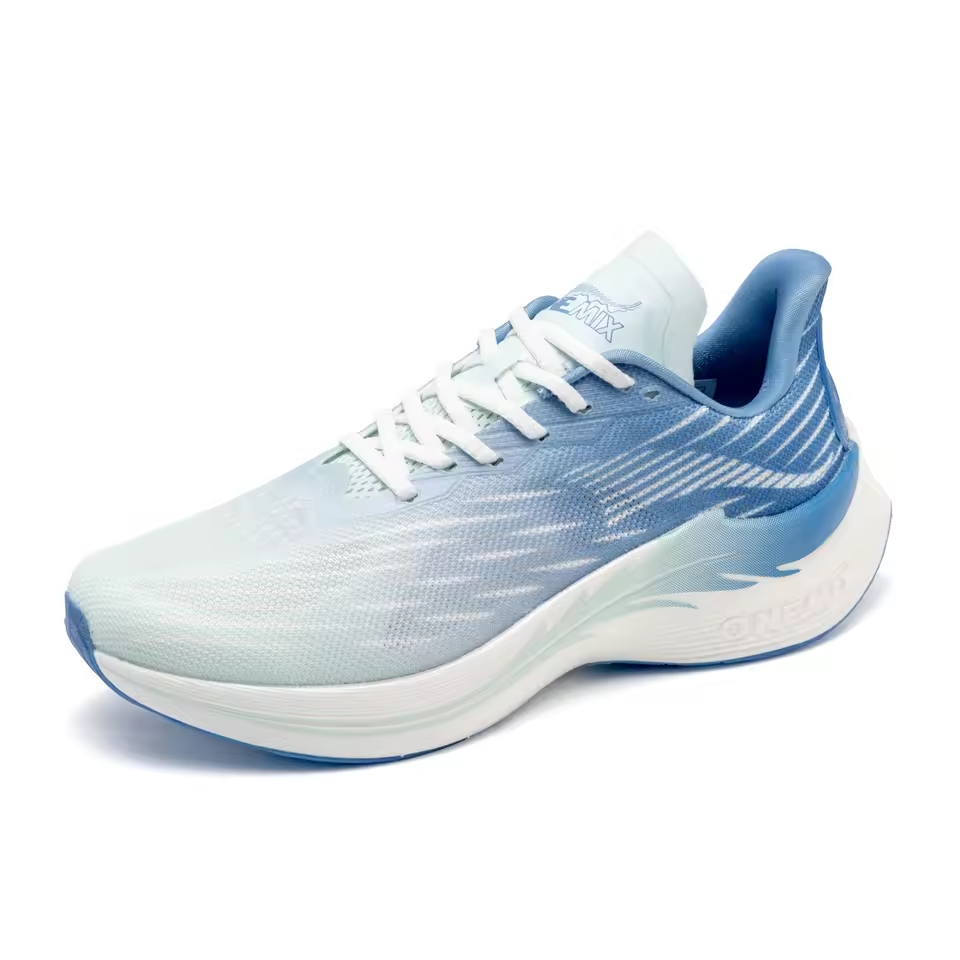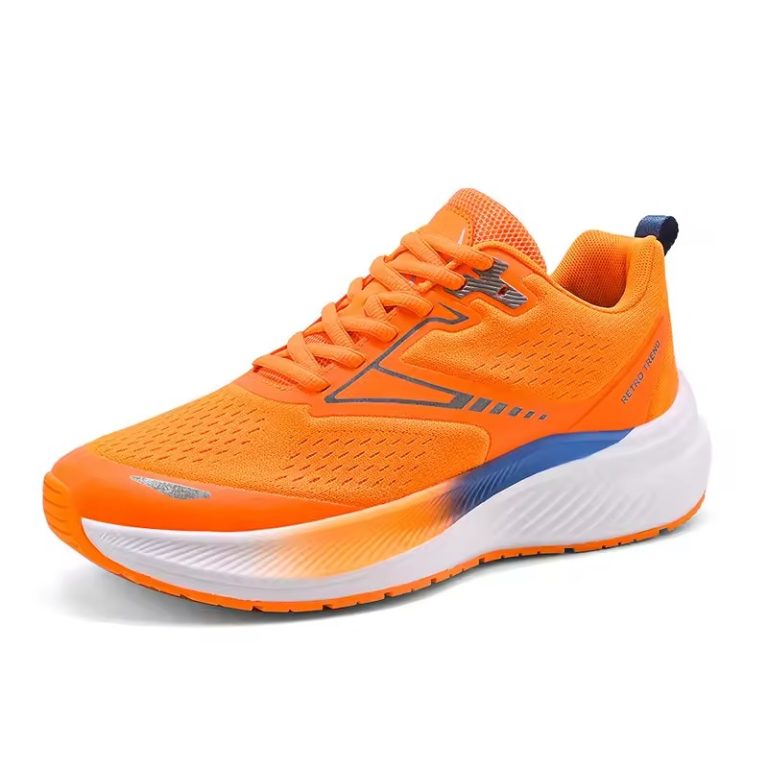The Evolution of Running Shoes
The running shoe has come a long way over the years. From the early days of spiked track shoes to the advanced, technology-filled options we see today, the development has been constant. One of the most significant advancements in this field is the introduction of the carbon plate running shoe. This innovation marks a notable shift in the design and engineering of running footwear.

Early models of running shoes were simple. They focused on basic foot protection and grip. As running became more popular, the need for better performance gear grew. By the 1970s and ’80s, cushioning and stability started to feature in shoe designs. Then, materials like ethylene-vinyl acetate (EVA) became widespread for their shock-absorbing qualities. The quest for speed and comfort was always at the forefront of designers’ minds.
The 21st century saw even more specialized shoes, including the minimalist shoe trend. Aimed at replicating barefoot running, these designs made shoes lighter and less restrictive. However, the next big leap was the carbon plate running shoe, which combined new materials and mechanics. It offered unprecedented energy return and efficiency. Manufacturers began integrating rigid plates into the midsoles of their shoes. These carbon plates serve to propel the runner forward. This shift sought to enhance performance, especially for long-distance runners.
The carbon plate running shoe is a result of relentless innovation and scientific research. As runners chase personal bests and world records, such advancements make significant impacts. This technology has not only changed the market but also how runners approach their sport. The evolution of running shoes, with carbon plates at the forefront, illustrates the ongoing pursuit of excellence in athletic footwear.
What Is a Carbon Plate and Its Purpose in Running Shoes?
A carbon plate in a running shoe is a thin, rigid insert. It sits within the midsole. The carbon plate’s purpose is to enhance performance for runners. It does so by improving energy return with each stride. The plate acts as a lever. When the foot pushes off the ground, it provides a spring-like effect. This helps to propel the runner forward more efficiently.
Traditional foam midsoles can compress and lose energy on impact. In contrast, carbon plates maintain their shape and redirect that energy. This creates a snappy feel. This technology is especially effective during toe-off. It works well for runners who strike the ground with the forefoot or midfoot. It helps to decrease the effort needed to push off.
Runners often describe the sensation as ‘rolling’ through their stride. A carbon plate makes the rolling motion smoother and faster. It is not merely about stiffness. Its strategic placement and shape also contribute to the shoe’s overall biomechanics. It guides the foot in a smooth transition from heel to toe.
This feature can be a game-changer in long-distance events. It can help reduce muscle fatigue over time. Marathoners and elite athletes have reported improved times. Some associate this with the introduction of carbon plate technology. The purpose of the carbon plate is clear. It’s to give runners an extra edge. For those striving to shave seconds off their personal best, it’s a revolutionary addition.
The Science Behind Carbon Plate Running Shoes
The concept of carbon plate technology in running shoes isn’t just about the material itself. It’s a perfect blend of material science and biomechanics. Let’s break down how they work and the science that makes these shoes so revolutionary.
Carbon fiber, the material used for the plates, is known for its stiffness and strength-to-weight ratio. This means a very light component can provide significant structural support, which is critical during the intense impact of each step in running.
When integrated into the midsole of a running shoe, a carbon plate acts as a spring. The energy a runner exerts pressing down is stored and then released, pushing the foot back up. This process, known as energy return, allows runners to use less energy to maintain their pace. Think of it as the shoe giving you a subtle boost with each step.
Additionally, the rigidity of the carbon plate can improve running biomechanics. It promotes a more favorable toe-off and stabilizes the foot throughout the stride cycle. This can lead to a more efficient running form and decrease in potential injuries caused by improper foot movement.
Studies have even suggested that running shoes with carbon plates can reduce the amount of oxygen runners use. Lower oxygen consumption implies better running economy, meaning runners can maintain their speed for longer without tiring as quickly.
In conclusion, carbon plate running shoes harness the exceptional qualities of carbon fiber. They deliver energy return, biomechanical efficiency, and an overall advantage for those seeking to optimize performance. It’s no wonder they’ve become a staple for competitive athletes and serious runners alike.

Key Benefits of Carbon Plate Technology for Runners
Carbon plate running shoes offer multiple benefits that cater to runners’ need for speed and comfort. Here are the key advantages that make these shoes a preferred choice for many athletes:
- Increased Energy Return: The carbon plate’s main feature is the spring-like effect that enhances energy return. This helps runners maintain speed with less effort.
- Improved Running Economy: Wearing these shoes can lower oxygen consumption. This means runners can keep their pace longer without getting tired fast.
- Enhanced Propulsion: The rigidity of the carbon plate supports superior propulsion, aiding in a quicker toe-off.
- Reduced Muscle Fatigue: The efficiency of carbon plate shoes means muscles work less, which can reduce fatigue during long races.
- Stability and Support: Carbon plates offer stability across the foot. This supports better form and may reduce injury risk.
- Long-Term Durability: These shoes are built to last. The carbon plate resists wear and performs consistently over time.
- Competitive Edge: Many runners report personal bests with these shoes. They give an edge that could be crucial in races.
With these benefits, it’s clear how carbon plate running shoe technology can be a game-changer for serious runners looking to enhance their performance.
Comparing Carbon Plate Running Shoes with Traditional Models
When evaluating the impact of carbon plate running shoe technology, it’s essential to compare them to traditional running models. Here’s how carbon plate shoes stack up against their predecessors:
- Design and Material Innovation:
Carbon plate shoes employ cutting-edge materials and design. Traditional shoes often use foam midsoles which can wear down more quickly.
- Energy Efficiency:
Carbon plates enhance energy return. Older models rely solely on foam, which may not be as efficient during toe-off.
- Performance:
Runners experience a ‘spring’ in their step with carbon plate shoes. Traditional running shoes don’t offer the same level of propulsion.
- Running Economy:
These modern shoes improve running economy. Traditional shoes rarely have features that significantly reduce oxygen consumption.
- Longevity:
With carbon plates, shoes exhibit less midsole compression over time. Shoes with standard foam midsoles may not retain their cushioning and support as long.
- Injury Prevention:
Carbon plate shoes can help stabilize the foot and promote better form, potentially reducing injury risk. Traditional models may provide less support and stability.
In conclusion, carbon plate running shoes offer distinct advantages over traditional footwear options. From better energy efficiency to increased durability, these modern shoes are transforming the running experience. For serious runners, the comparison makes a convincing case for opting into the carbon plate technology.

How To Choose the Right Carbon Plate Running Shoe
Choosing the right carbon plate running shoe is crucial for optimizing your performance. To make an informed decision, consider these essential factors:
- Your Running Goals: Determine if your focus is on distance, speed, or improving personal bests. Different models cater to various objectives.
- Foot Type and Gait: Know your foot arch and whether you pronate, supinate, or have a neutral gait. This information guides your choice for the most suitable shoe.
- Shoe Fit: Ensure a snug, comfortable fit without tightness. A good fit enhances the shoe’s efficiency and your comfort.
- Cushioning Level: Some runners prefer a firmer feel, while others opt for more cushioning. Choose based on what feels best during your run.
- The Carbon Plate: Not all carbon plates are alike. Look for a plate that complements your stride and provides the desired energy return.
- Durability: Consider how long the shoes maintain their responsiveness and support. Good durability means less frequent replacements.
- Brand and Model Research: Read reviews and compare models. Seek out models that have a proven track record for performance.
By taking these factors into account, you can choose a carbon plate running shoe that best fits your needs and helps you reach your running goals.
The Impact of Carbon Plate Shoes on Running Economy
Running economy plays a crucial role in a runner’s performance, and carbon plate running shoes have made a notable impact in this area. These shoes are designed to optimize the energy a runner uses during their stride, leading to potential improvements in their running efficiency. Here we’ll explore the specific ways carbon plate shoes can affect running economy.
Firstly, the inherent stiffness of the carbon plate provides a lever-like effect. This helps to propel the runner forward with less energy. Runners tend to maintain their speed with reduced effort compared to using traditional shoes. This reduced effort could mean conserving energy for the latter stages of a race.
Next, the carbon plate minimizes energy loss during the toe-off phase of the stride. It keeps the midsole from compressing too much, which can happen with regular foam. This results in a snappier feel and a more responsive push-off. Runners can therefore sustain a faster pace for longer durations.
Furthermore, due to the enhanced energy return, muscles may experience less fatigue. Less fatigue contributes to a steadier running form over time. A consistent form is vital for maintaining an efficient running economy.
Additionally, many carbon plate running shoe models combine the plate with advanced foam technologies. These foams can further enhance energy conservation and reduce the impact on muscles. By combining these materials, manufacturers aim to create the optimal blend of support and energy efficiency.
Lastly, a study published in the journal ‘Sports Medicine’ points out that these shoes can decrease oxygen consumption. This means that the energy cost of running at a given pace can be lower with carbon plate shoes. Lower oxygen consumption indicates a better running economy—this is the equivalent of driving a more fuel-efficient car for longer distances.
In summary, carbon plate running shoe technology directly impacts running economy by promoting less energy expenditure and more sustained performance. These benefits are why many competitive runners choose carbon plate shoes as they seek to improve their race times and overall running efficiency.
Ethical Considerations and the Future of Carbon Plate Running Shoes
When we talk about carbon plate running shoes, we must also consider the ethical aspects. These high-tech shoes raise questions about fairness in competition. Not all athletes can access or afford these shoes. This could create a divide between sponsored and unsponsored runners. Let’s delve into the ethical considerations:
- Equal Access: Carbon plate shoes are costly. This limits who can use them. Equality in sports is vital.
- Performance Enhancement: These shoes can give an edge. Some argue it’s similar to technological doping. Is it fair play?
- Regulations: Governing bodies struggle to set rules. They must be fair to all runners. Uniform standards are in debate.
Moving to the future of these shoes, innovation won’t stop. We expect more advances that could further change the sport:
- Technological Advancements: New materials and designs will emerge. They may make shoes even more efficient.
- New Guidelines: As technology evolves, so will regulations. They aim to keep the sport fair for everyone.
- Wider Adoption: Prices may drop over time. This would make carbon plate shoes more accessible to all runners.
In summary, carbon plate running shoes are a major leap. They change how runners perform. But, we must ensure they do not upset the sport’s integrity. Looking forward, we hope for a balance between advancement and fair competition. This will keep the spirit of running alive for all.

